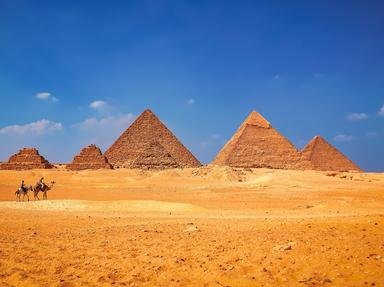Quiz Answer Key and Fun Facts
1. What does the term "hieroglyphs" mean?
2. Who is credited with deciphering the hieroglyphs?
3. What is the original meaning of the word cartouche?
4. Which cartouche, inscribed in the Rosetta Stone, was a vital key for the decipherment of the hieroglyphs?
5. What do hieroglyphs consist of?
6. Vowels are usually not indicated in hieroglyphic script.
7. What is a determinative?
8. Which of these languages was instrumental in hieroglyphic decipherment?
9. In what direction are hieroglyphs NOT written?
10. In Egyptian society, scribes were NOT:
Source: Author
russalka
This quiz was reviewed by FunTrivia editor
bloomsby before going online.
Any errors found in FunTrivia content are routinely corrected through our feedback system.


